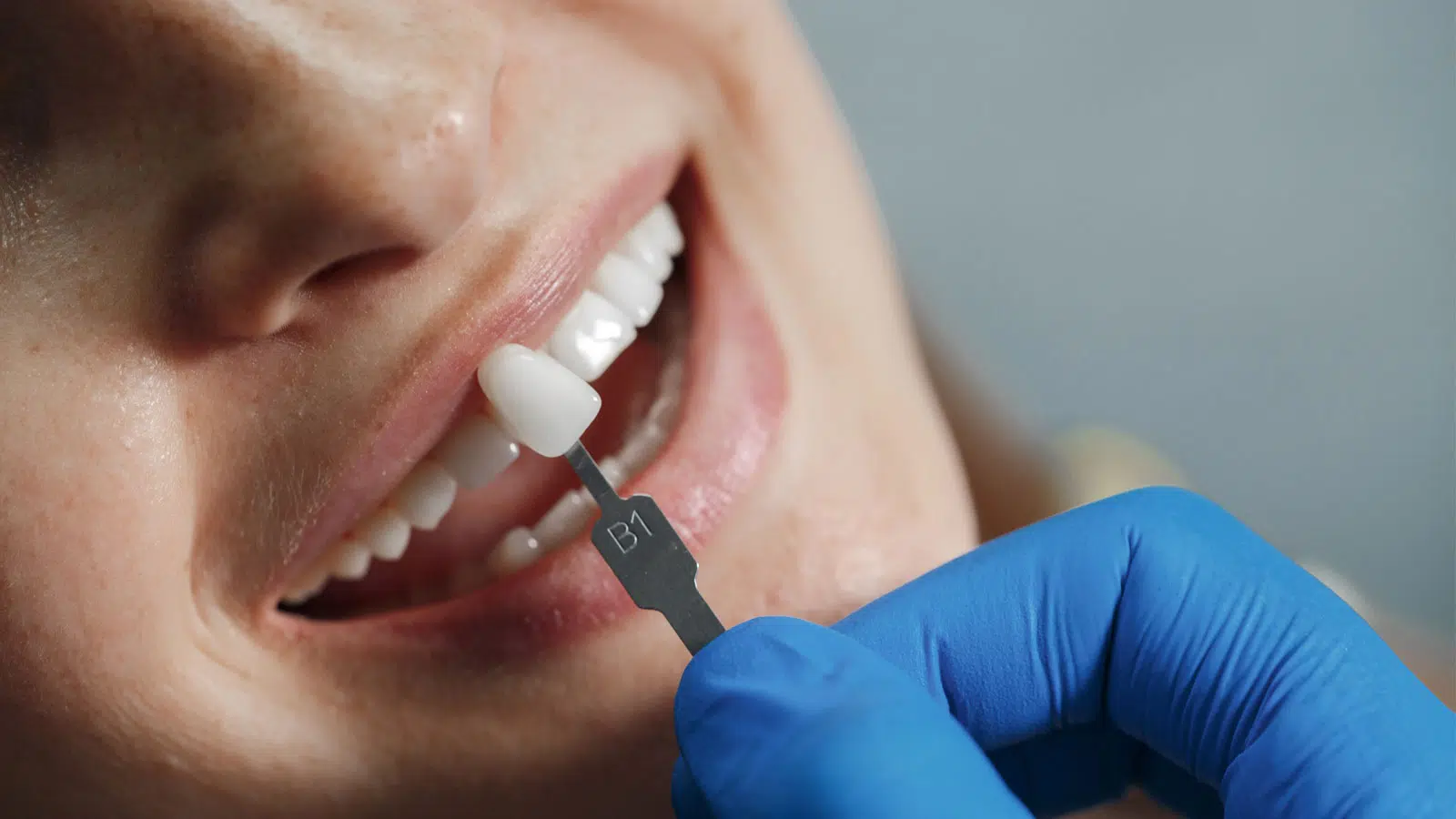Many dream of having an attractive smile that wins hearts, and achieving beautiful, white teeth is the way to that smile. Today, The Hollywood smile has become an ideal choice for those who want to improve the appearance of their teeth and create a natural, attractive smile.
What is a Hollywood Smile?
A Hollywood Smile is a comprehensive cosmetic procedure that improves the shape, size, color, and alignment of teeth to achieve a bright, symmetrical smile like those seen on movie stars. The process involves applying veneers to the surface of the teeth—thin shells bonded to the teeth to enhance their shape and color, giving them a natural and attractive appearance.
When is a Hollywood Smile Recommended?
Although the primary goal of a Hollywood Smile is cosmetic, this technique can also address various dental issues, making it a solution for therapeutic purposes as well. These issues include:
- Yellowing and tooth discoloration
- Stained teeth due to large cosmetic fillings.
- Cracked or chipped teeth.
- Gaps between teeth.
- Misaligned teeth.
- Irregular tooth shape or size.
Procedure and Steps:
- Examination and Consultation: The dentist conducts a thorough examination to assess the condition of the mouth, teeth, and gums, ensuring veneers are suitable for the patient.
- Veneer Preparation:Custom veneers are crafted to match the patient’s natural teeth, a process that takes about 1–2 weeks.
- Veneer Placement: The dentist bonds the veneers to the patient’s teeth, ensuring a proper fit.
Veneers may not cover all teeth; the dentist may only place them on the front teeth.
Advantages of a Hollywood Smile:
- Achieves an attractive smile with a natural appearance.
- Boosts self-confidence.
- Delivers fast, satisfying results.
- The veneers resist stains, protecting teeth from discoloration.
- Addresses multiple dental issues.
- Pain-free procedure.
- Long-lasting results.
Disadvantages of a Hollywood Smile:
- High cost.
- Requires enamel removal, making the process irreversible (veneers cannot be removed to restore natural teeth).
- Cracked veneers cannot be repaired.
- May increase tooth sensitivity to hot and cold.
- Veneers may loosen or fall out due to habits like nail-biting.
Tips for Maintaining a Hollywood Smile:
- Visit the dentist regularly for check-ups.
- Maintain daily oral hygiene by brushing and flossing.
- Avoid biting nails or using teeth to open packages or chew hard foods/ice, as this may crack or dislodge veneers
- Although veneers are stain-resistant, dentists may recommend limiting stain-causing foods and drinks like tea and coffee
A Hollywood Smile is more than just a beautiful, captivating look—it’s a complete transformation that boosts confidence and opens doors to better communication and influence. If you choose to get one, you won’t be disappointed. Despite the cost, the results are often satisfying and well worth the effort.




